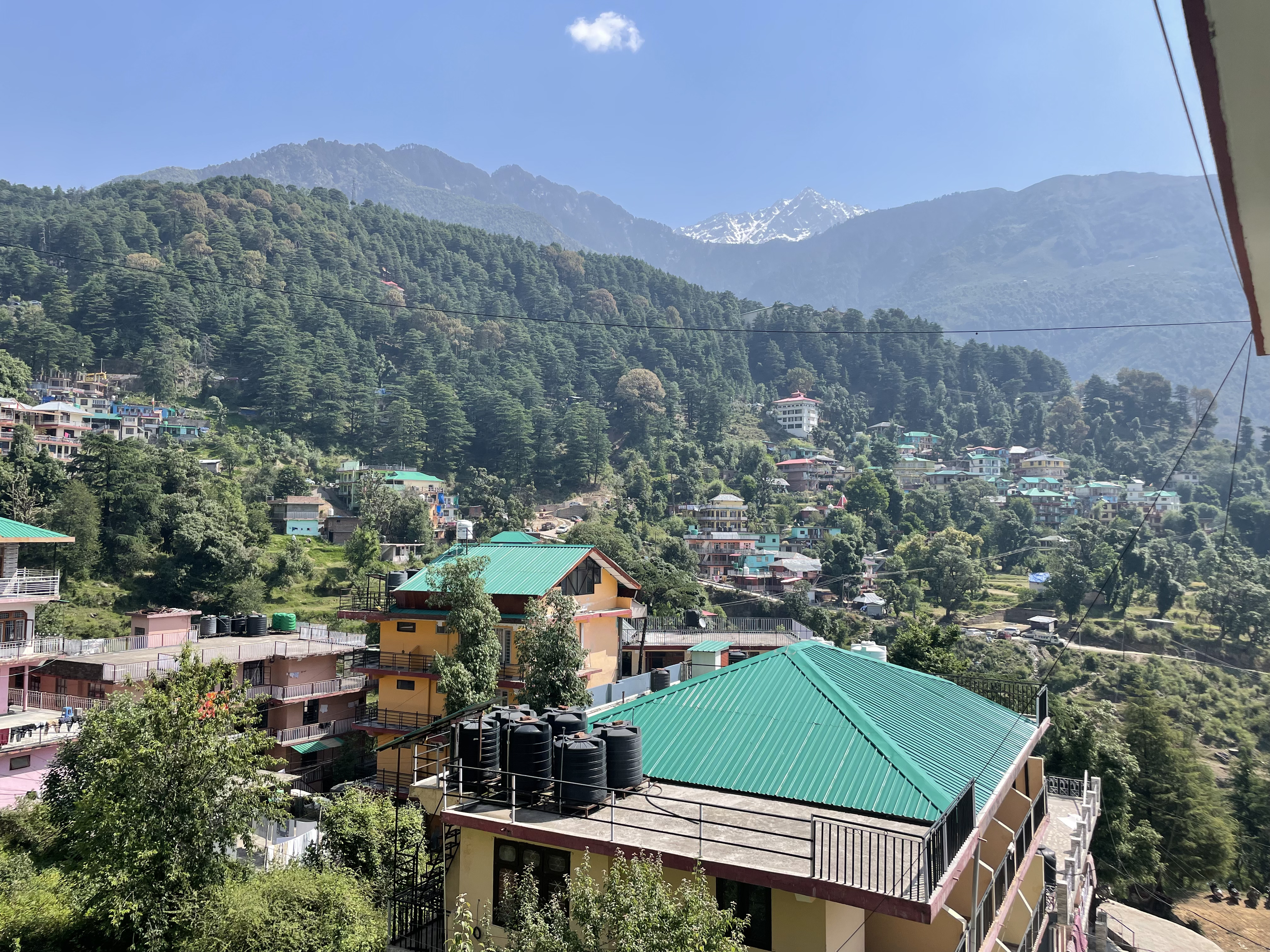Week 1: From Delhi to Dharamshala
When Kate and I arrived in New Delhi at around three in the morning, it was ninety-three degrees. We hailed a cab to our first destination, a family-owned guest house about twenty minutes into the city, wandered around for several minutes while trying to find the door, and promptly fell asleep.
At four o’clock in the afternoon, we awoke to the voices of several parrots. We opened our doors intending to greet each other and decide what to do for dinner and were met first with a blistering wave of 113° heat and then with Maple, the resident hotel dog, who had a penchant for stealing our shoes. After electing to eat dinner at the hotel, we retreated to work on the Joint Journal Competition (JJC).
Dinner was some of the most delicious food I have ever eaten—rice, masala, homemade naan, and cauliflower, all made by the hotel's owner, a mother, and brought from the kitchen by her sons. Other guests of the hotel all sat with us at a long table, and we spoke to them while we ate—a woman from Germany, in India on business; two men from France, here to complete a meditation course; one woman, a textile artist, visiting from Britain; and an Australian film director, prodding everyone at the table about world politics. We spoke a little and listened a lot until we could no longer keep our eyes open.

For the rest of our time in Delhi, we sat in the garden sweating out our exhaustion and Bluebooking citations for the JJC. We left after two days, at three o’clock in the morning (a nice, breezy ninety-two!), for our flight to our final destination: Dharamshala.
After a short flight on a twin-prop plane and a quick taxi ride, we arrived. Although the Tibetan Legal Association’s (TLA) office is in Dharamshala, we decided to stay in Mcleod Ganj, the next town up. We settled into our guest house, worked for the rest of the day on (you guessed it!) the JJC, and then prepared for our first day of work.
 On our first day, our boss, a lawyer at the TLA, took us to the Tibet Museum so that we could better understand the community we were about to work for. We learned primarily about the community of Tibetans living in exile in Dharamshala—about the human rights abuses they’ve been forced to endure, about the harrowing escape from Tibet over the Himalayas, and about how His Holiness the Dalai Lama established the Tibetan Government in Exile (CTA) in Dharamshala after he escaped from Tibet in 1959.
On our first day, our boss, a lawyer at the TLA, took us to the Tibet Museum so that we could better understand the community we were about to work for. We learned primarily about the community of Tibetans living in exile in Dharamshala—about the human rights abuses they’ve been forced to endure, about the harrowing escape from Tibet over the Himalayas, and about how His Holiness the Dalai Lama established the Tibetan Government in Exile (CTA) in Dharamshala after he escaped from Tibet in 1959.

Next, we visited the Tibetan Supreme Justice Commission, the highest judicial body under the Charter of the Tibetans in exile. Because Tibetans living in India are not Indian citizens and do not have refugee status, their judiciary can only deal with civil cases, and their judicial bodies must be called “commissions” rather than “courts.” We ended the day by visiting the Library of Tibetan Works and Archives, where we saw historical Tibetan Buddhist manuscripts and statues.
Kate and I worked on our first research project for the rest of the week. We’re researching “The Protection of Children from Sexual Offences Act” (POCSO Act), which was enacted by the Indian government in 2012, so that we can help the TLA compile a list of recommendations for the Tibetan Government in Exile about how to handle cases of sexual violence against children. As a part of this research, we spoke to a woman who works at the Women’s Empowerment Desk (WED) within the CTA. She told us about the difficulties they’ve had raising awareness about the Act’s existence and combating the stigma of sexual assault. We also spoke about what the CTA, and the WED specifically, is looking for in potential new guidelines combating sexual violence against children so that we could better focus our research. During the next few weeks, our task is to work towards a list of recommendations that would combat existing legal and social roadblocks to helping underage survivors of sexual abuse.